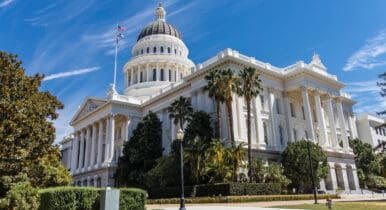Influencer Engagement and Coalition Building: Three Pros Weigh in
“Influencer” has become a buzz word in the world of advocacy and politics, but it’s not always clear what it means.
Three public affairs and advocacy pros joined C&E for a panel discussion last week about how to identify and deploy influencers and build more effective coalitions in today’s political and advocacy environments. Here are some of their tips:
Not All Influencers Are Created Equal
When it comes to identifying influencers to push your message forward, it’s not always enough to simply find the content creators and personalities with the biggest followings and widest reach, Daraka Satcher, a managing director at Narrative Strategies, said.
“In our world, we have to be very careful about who to work with in the influencer world,” Satcher said. “There needs to be legitimate expertise attached to who we bring into the fold.”
“You have people out there that have huge audiences and can draw a lot of attention, but with the people that we work with everyday, yeah, attention is fine,” he added. “But if we pull in an influencer who really does not have the expertise to kind of ruminate or talk on the issue that’s important to us or our client, it’s going to backfire.”
Jenelle Coy, the founder and CEO of the communications firm Spero Studio, said it’s worth taking a deeper look at so-called “micro-influencers” – people who may have a smaller audience but still carry significant sway among a select group or industry.
“We look for shared value, credibility with the audience they serve and also clarity of purpose,” Coy said. “For activists, we consider who’s really listening when they speak.”
You Don’t Have to Agree on Everything
Advocacy groups often focus on finding steadfast allies to build coalitions with. But Satcher said that some of the strongest coalitions are those made up of groups that don’t have a lot of common ground.
“My favorite coalitions are ones where organizations come together on a particular issue, where they may not agree on 90 percent of the other things, but on this one-to-five percent of things they agree on,” Satcher said.
The benefit of working with groups that don’t necessarily align with one another on everything is that it helps build consensus and a broader base of support, Satcher said.
Of course, Satcher and others acknowledged that disagreements have the potential to lead to tensions within coalitions. Julia Watts, the senior vice president of mobilization and campaign management at Precision Strategies, said that it’s vital for coalitions to lay out guiding principles to remind each player of their ultimate goal.
“Laying out guiding principles to really ground the work of the coalition and remind folks what are we here to do is essential,” she said, adding that it’s important to articulate “the mission so that down the road as things evolve…you can almost tap the sign and remind folks this is what we’re here to do.”
Don’t Shy Away From Paid Partnerships
Advocacy and public affairs pros acknowledge that it can be a bit awkward for influencers and messengers to disclose that they’re being paid to speak on a certain issue. But with the right messengers, Watts said it’s good to be transparent.
“Ultimately, it’s not a bad thing to pay people for their time. We shouldn’t try to hide the ball on that,” Watts said. “We should lead with that. And if you’re finding a messenger who has a track record of speaking on an issue, who is a natural fit for a campaign or a brand, being very clear and transparent that this is a paid relationship doesn’t have to undermine our message.”
Satcher said that it goes back to finding the right influencer to carry your message.
“You seek out people who are already and who are clearly in line with what you are trying to do so that there are no questions about whether there is pay to play,” Satcher said, adding: “You have to make sure that you can avoid those appearances by doing your due diligence in terms of who you’re working with.”


